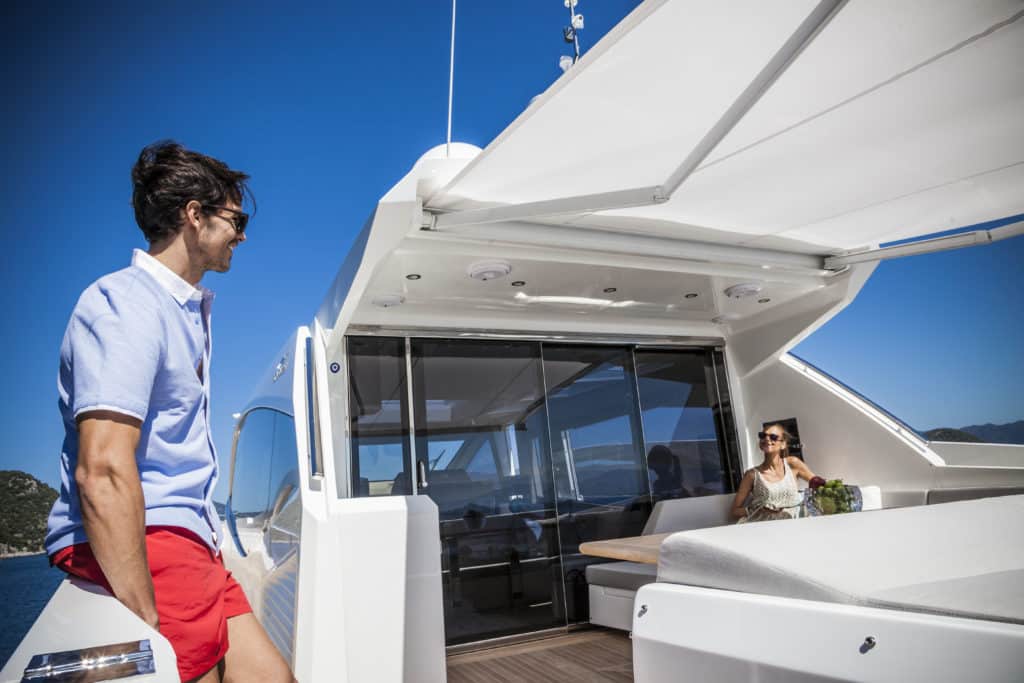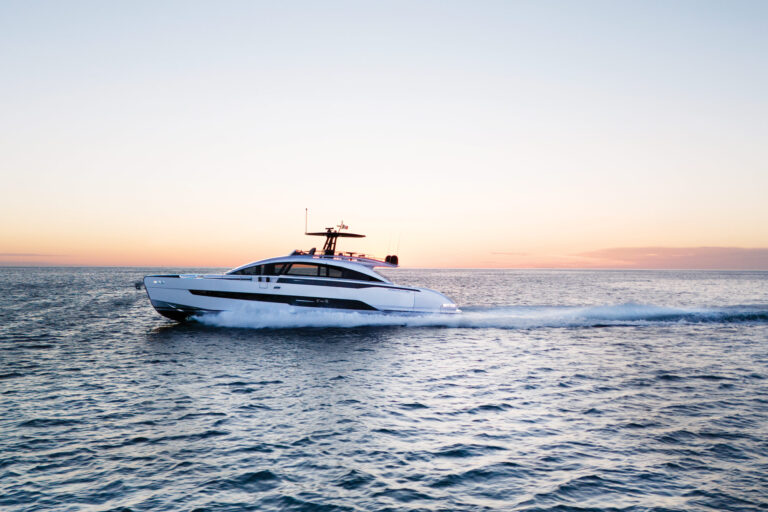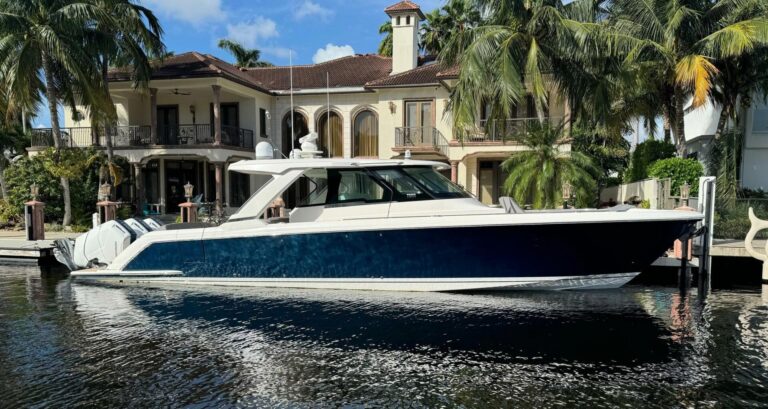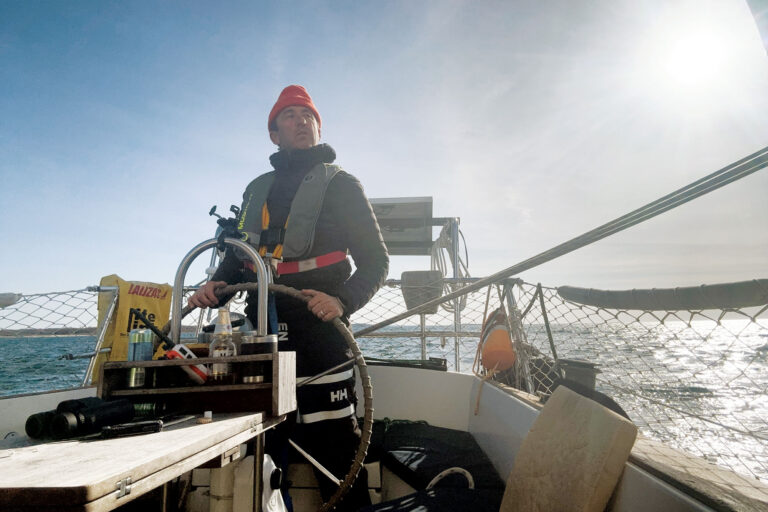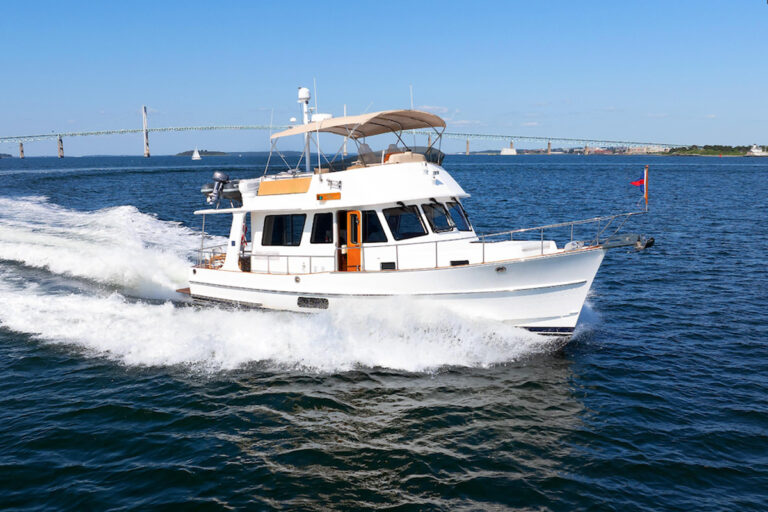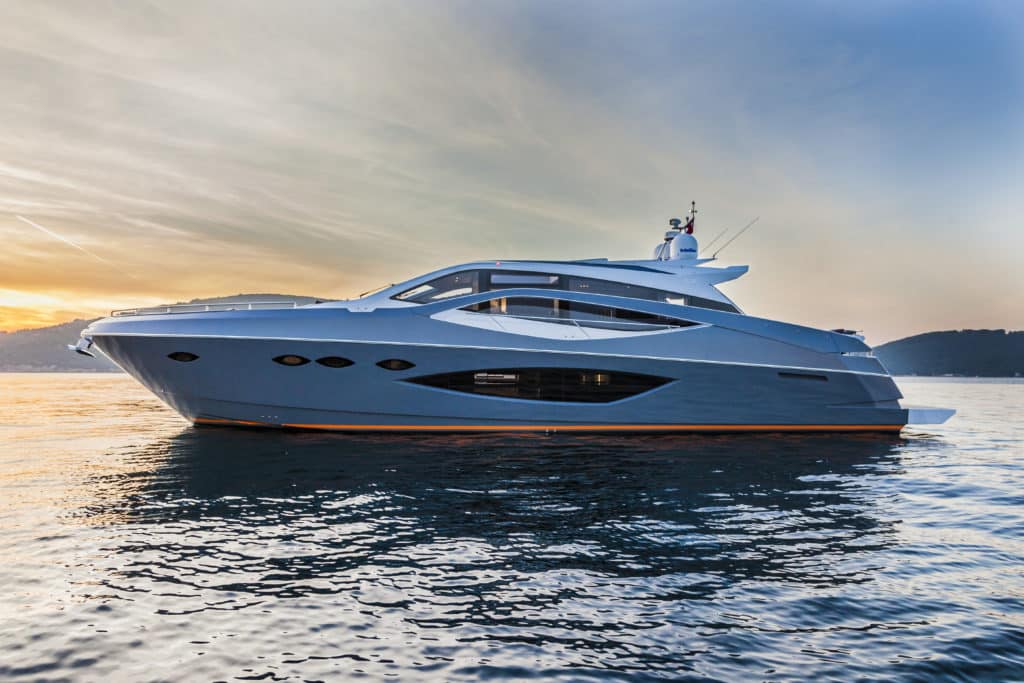
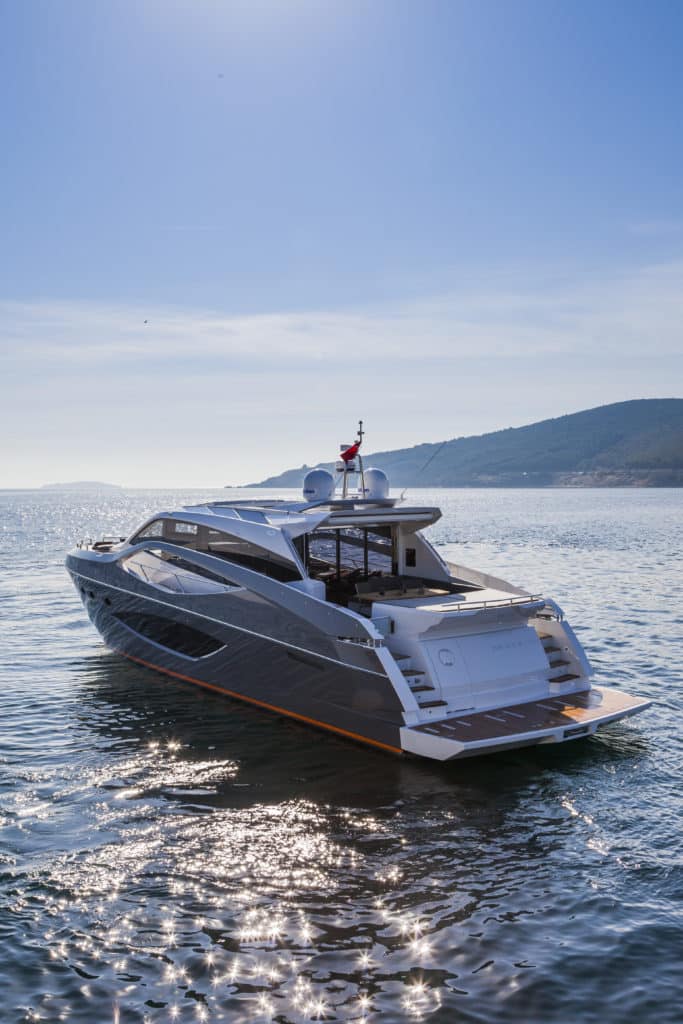
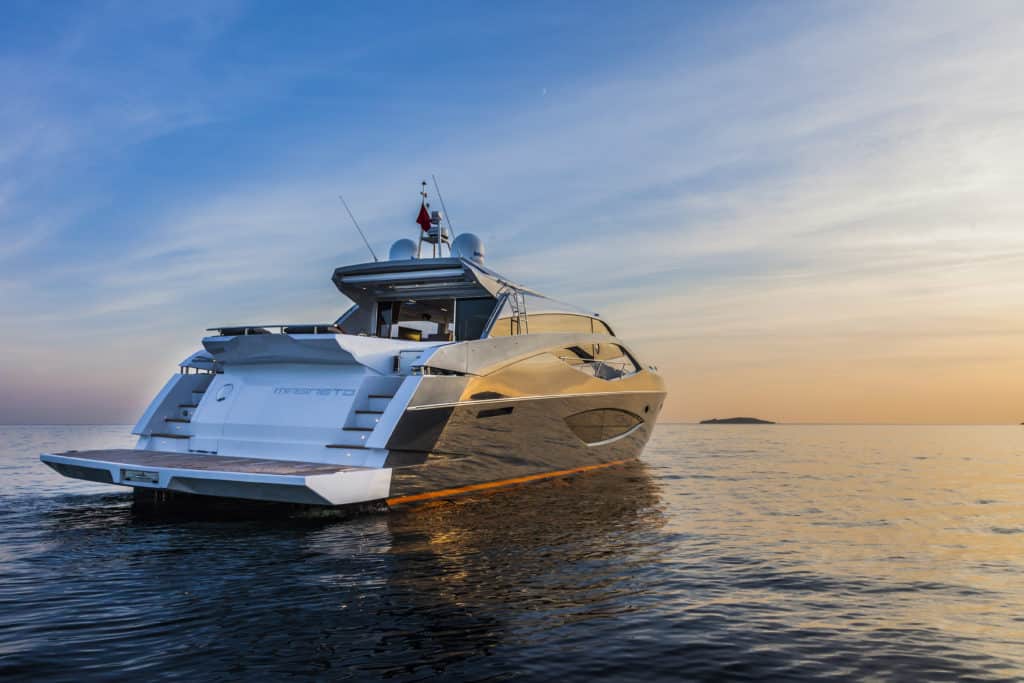
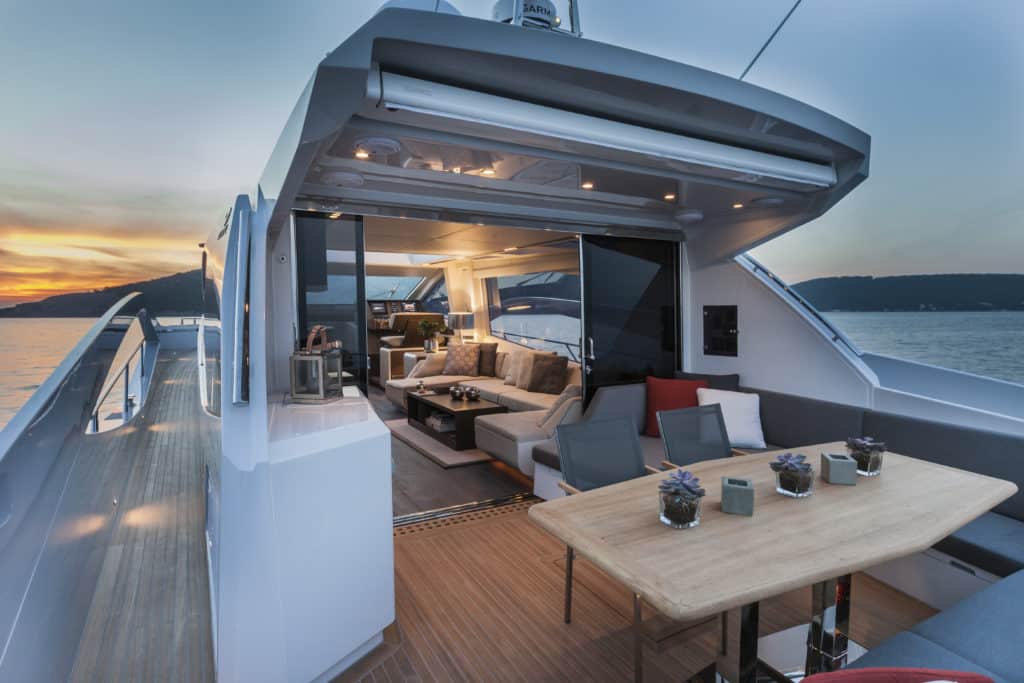
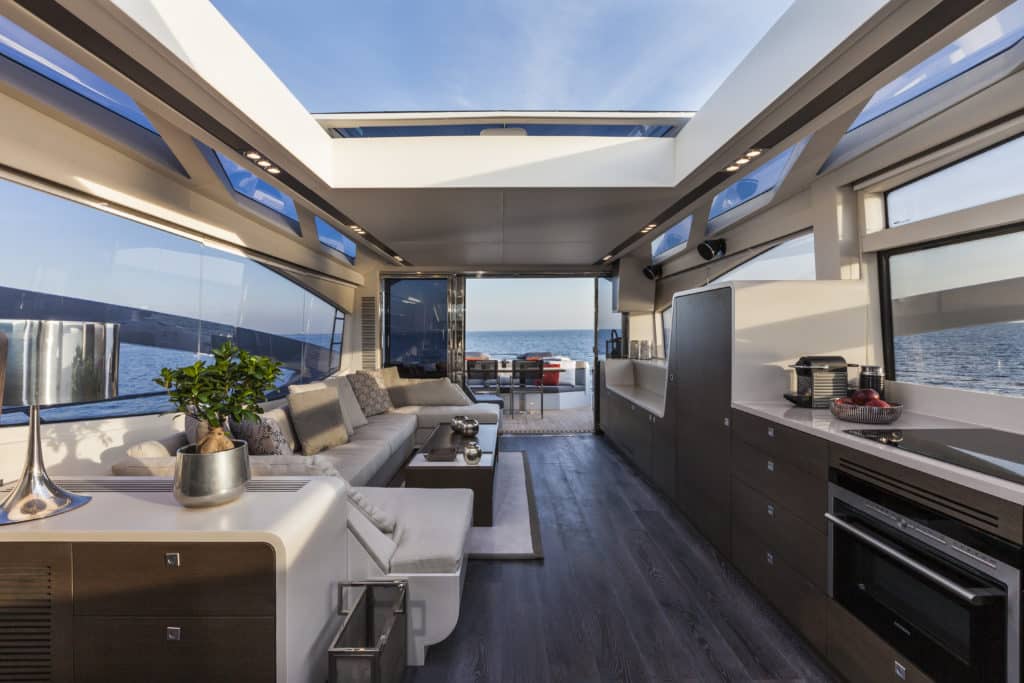
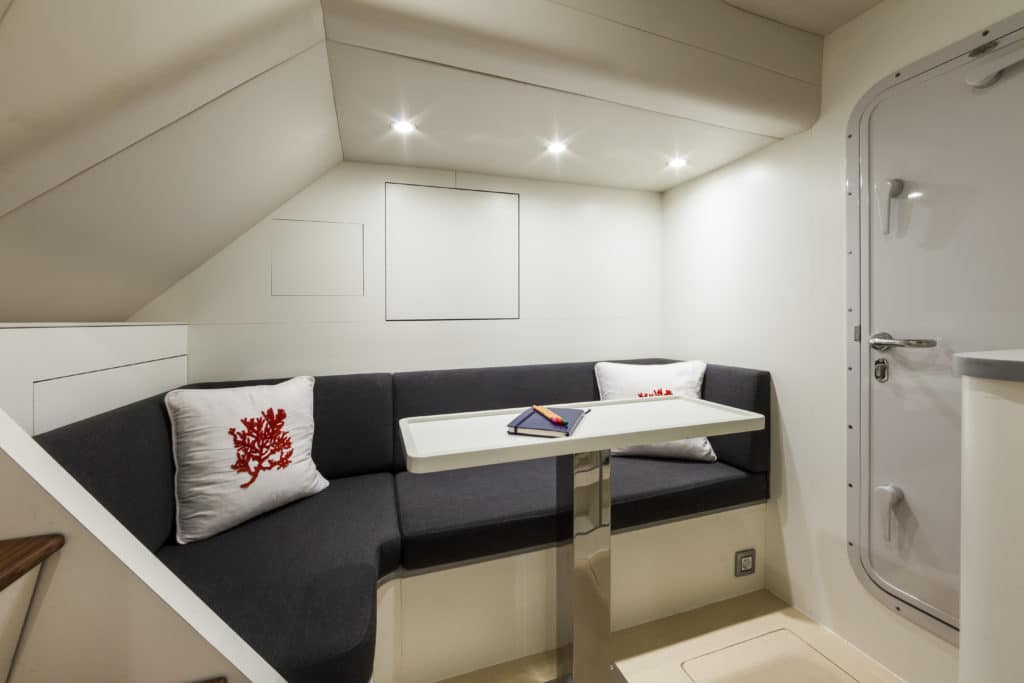
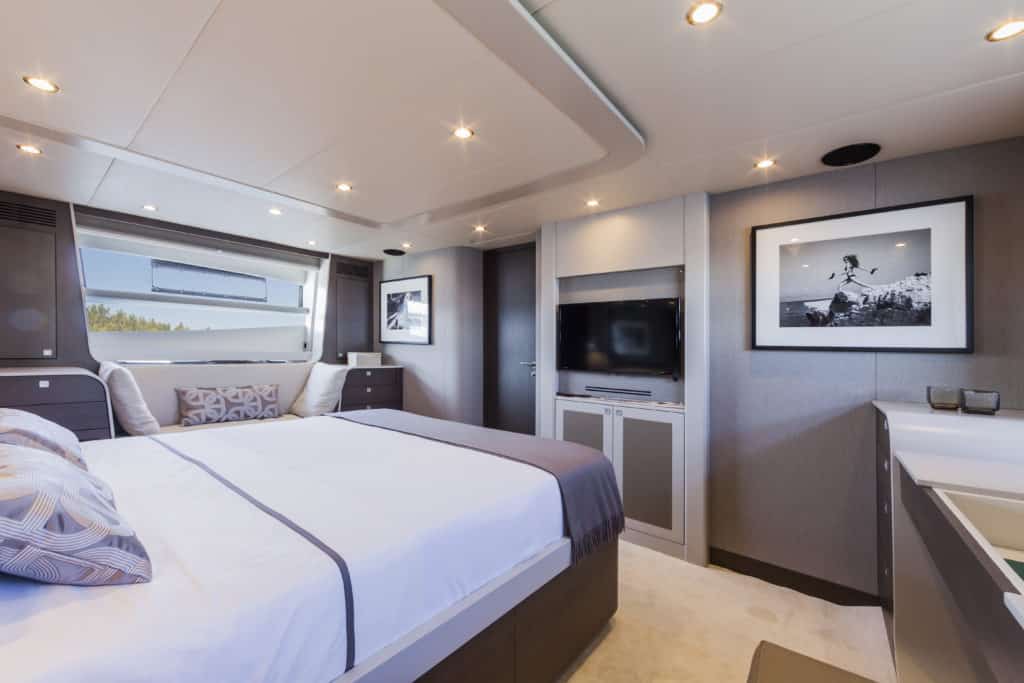
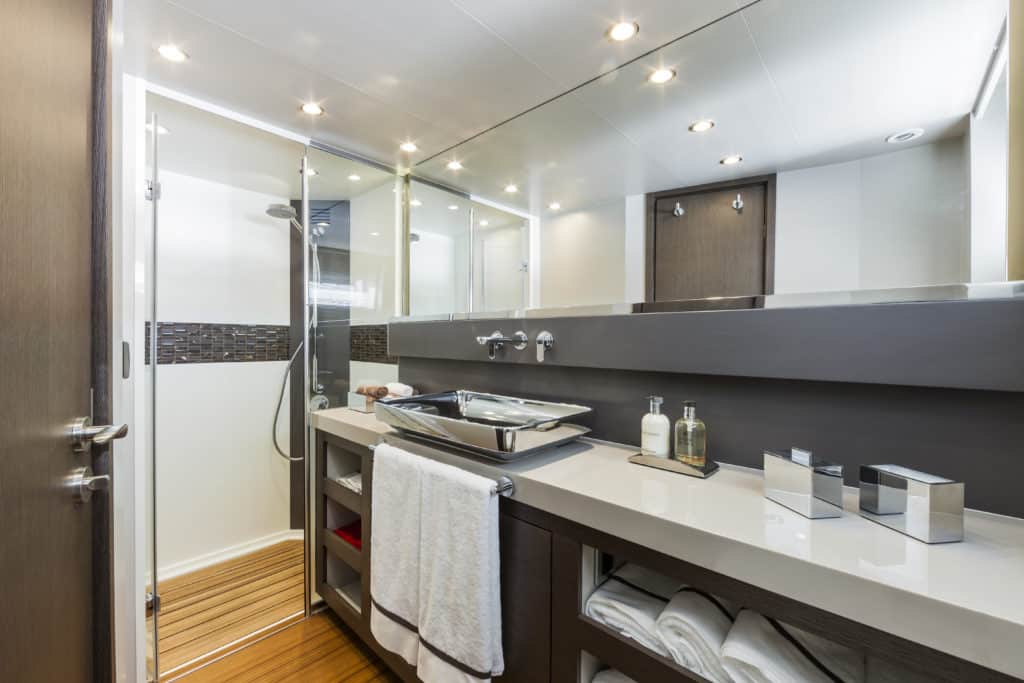
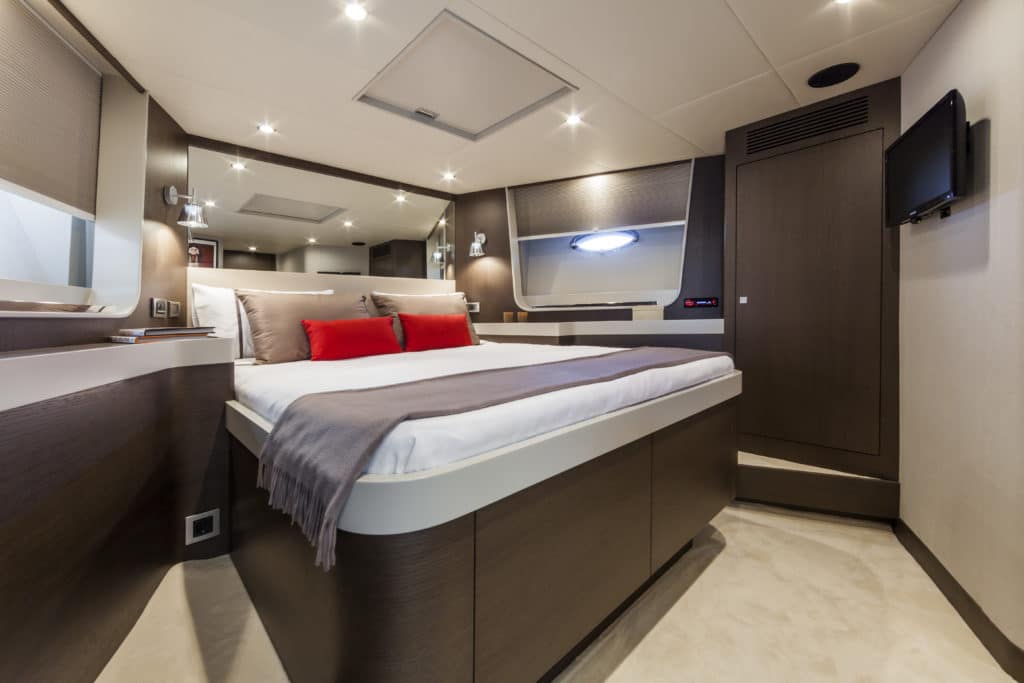
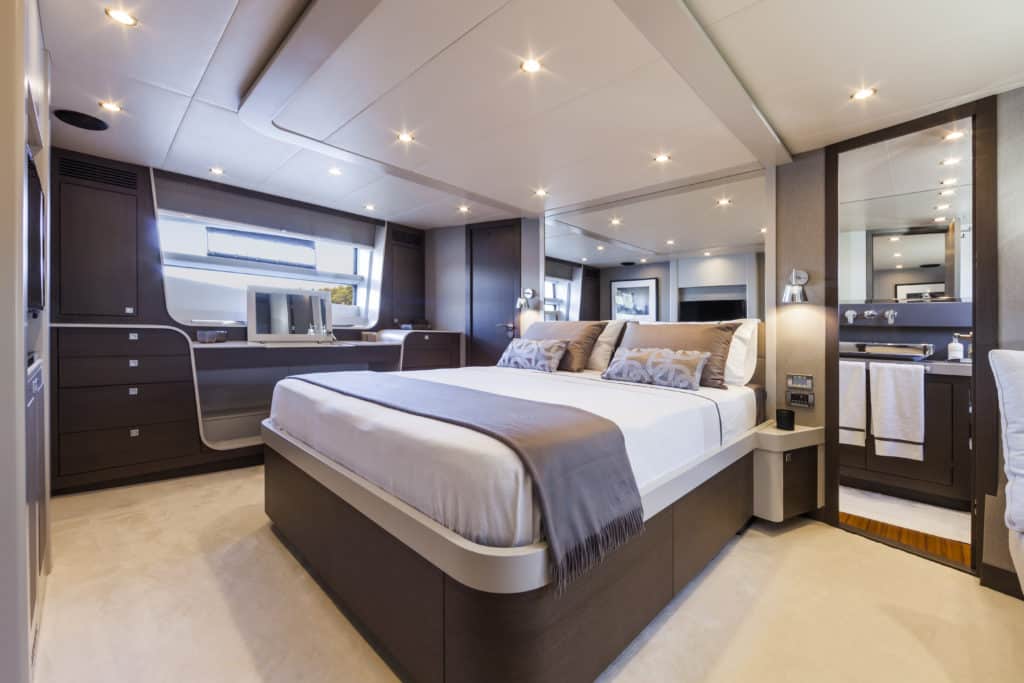
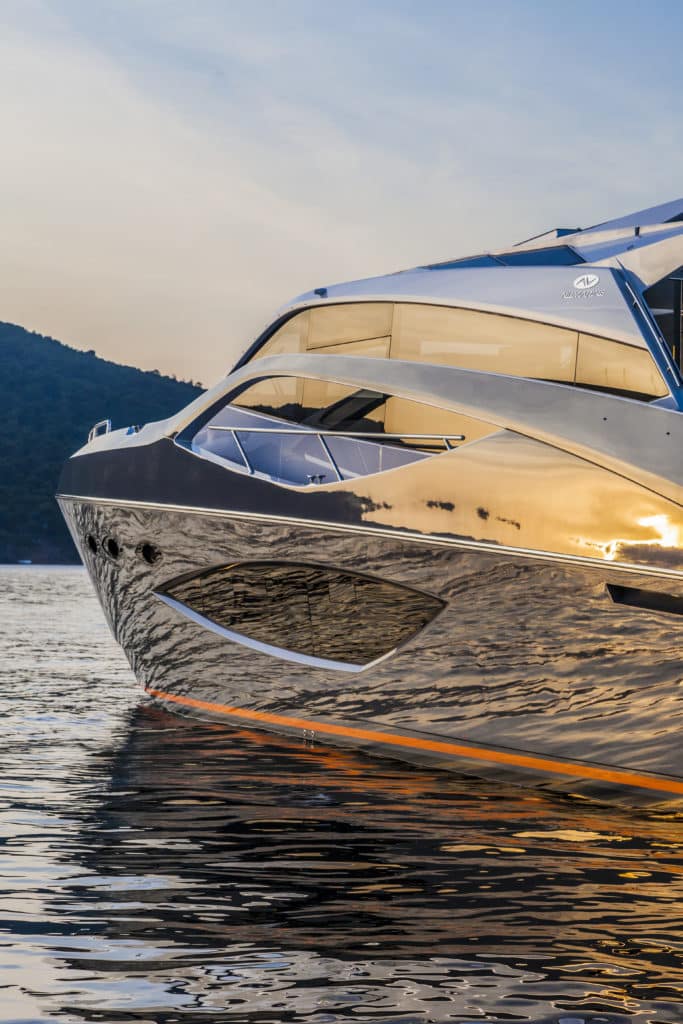
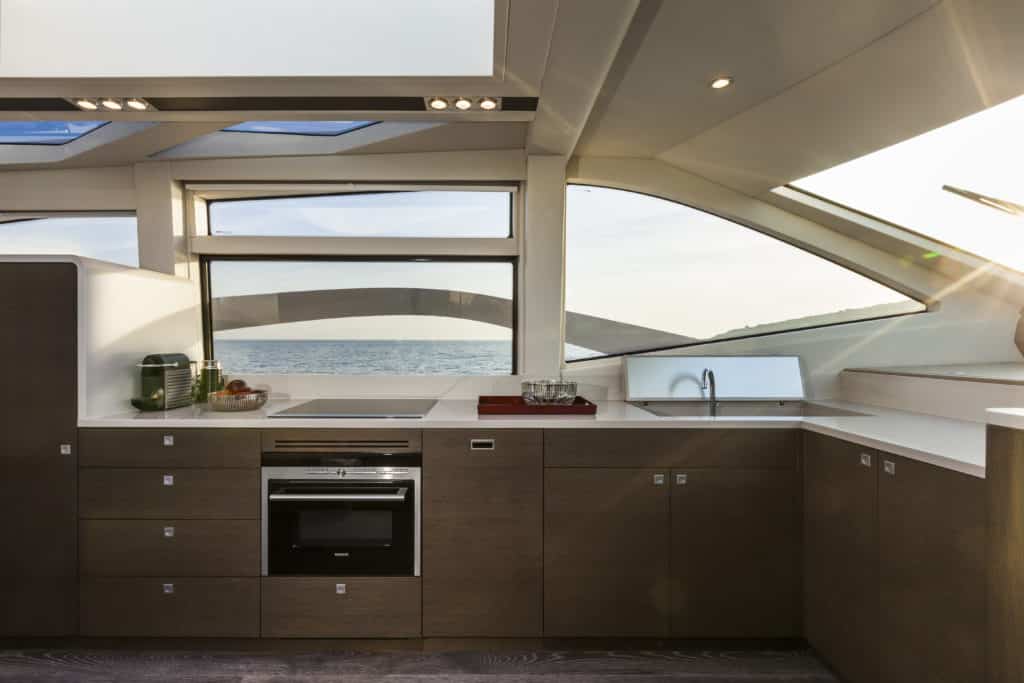
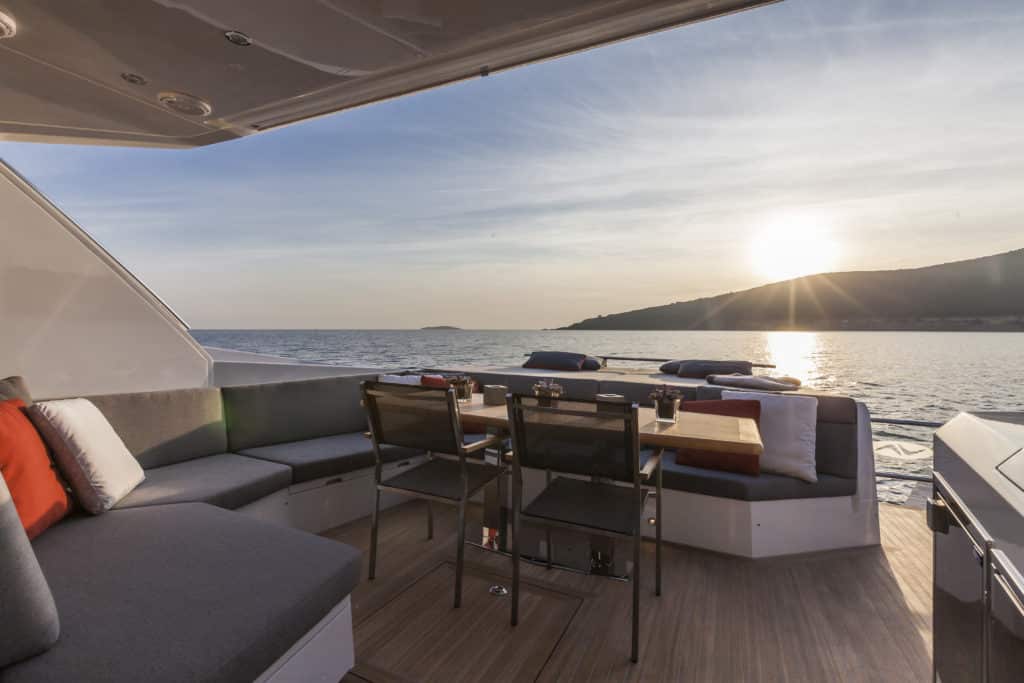
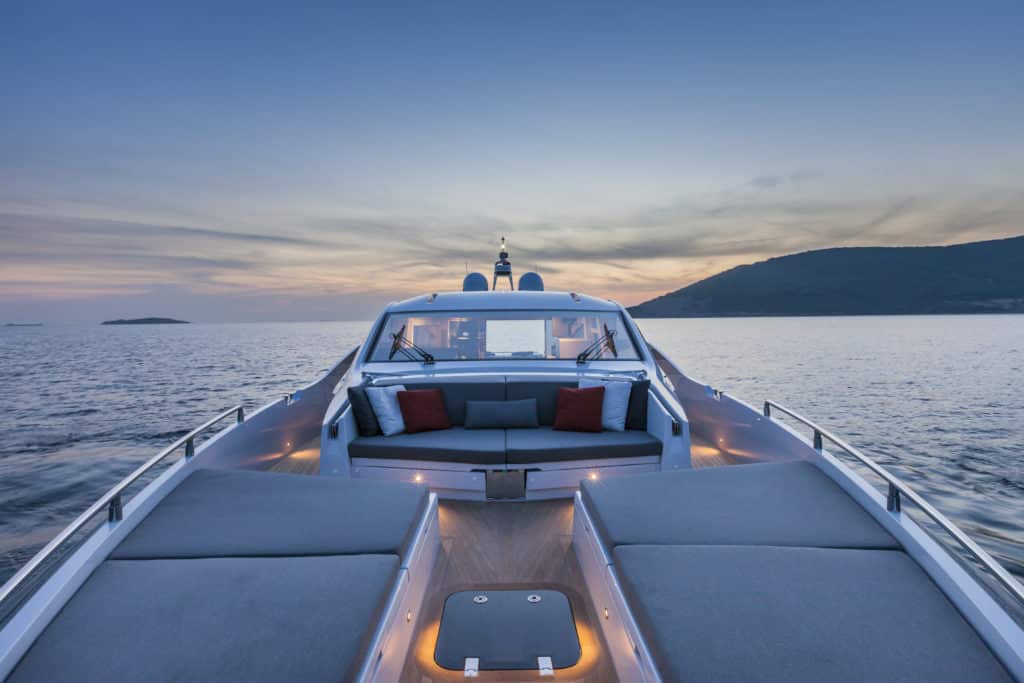
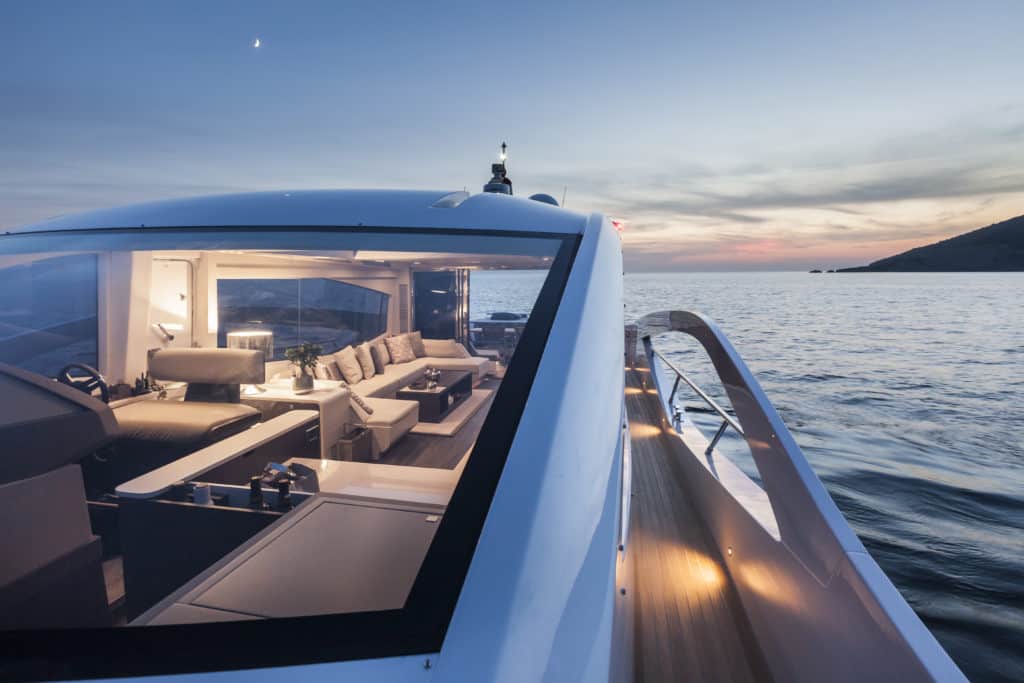
WHEN [NUMARINE][] CEO Omer Malaz introduced the company’s 70, he also announced that the builder was targeting international clients: “With this 70, we are aiming at a competitive sector of the -market, so we need to make our yachts stand out from the competition.” In terms of styling, there is no doubt the Turkish–built 70 does that. She is sleek and high-tech with a look that’s hard to forget.
Her profile is powerful and emphasized by turned-in bulwarks at the bow, but what really catches your gaze is the way the top section of the bulwarks amidships lifts up and follows the super-structure’s line before dropping down toward the stern. This creates an eye-in-the-side profile through the salon’s dark glass windows. Below this line is the matching shape of the hull-side -windows, and the combination is striking and dynamic. It’s a distinctive aesthetic that comes with bright color -options to set it further apart from the crowd. The prototype 70 was finished in bright orange, whereas my test boat was a more subdued blue (still bright in many people’s opinions).
Beneath all of this styling is a sound, agile yacht built to high standards. Numarine says the use of resin infusion in its composite hulls has allowed the 70 to come in 20 to 25 percent lighter than some of the competition’s hulls, which are hand-laid. This claim would be reflected in improved fuel consumption and performance, so I was -eager to get this yacht onto the water.
Winds were light, seas were 2 to 3 feet, and the Tony Castro-designed hull’s fine entry cut with minimum fuss through what waves there were. Her turning and handling were sharp and -precise. Powered by a pair of 1,000-horsepower MAN diesels, the 70 achieved speeds of just over 30 knots with a full load. With a lighter load and the 1,200-horsepower diesel option, I think she could easily reach 35 knots. At a more economical speed of about 12 knots, fuel burn was in the fuel-miserly range of 25 gph.
The 70 had a distinctive sporting feel about her handling and performance, and setting the -throttles at a cruising speed of around 27 knots, she could run comfortably all day. At full speed, there was occasional pounding from the chines, but at cruising speeds everything ran smoothly. This is the first Numarine to have propellers operating in semi-tunnels. Rather than use this to reduce the shaft angle, the designers brought the engines and their associated V-drive gear boxes farther aft so there is more space for accommodations. Everything in the engine compartment is accessible for servicing, and the excellent sound insulation is reflected in low decibel readings while underway.
Slow-speed handling was especially precise, and close-quarters maneuvering was made easy with a bow thruster. A starboard-side helm -featured a wide, single-piece windscreen and narrow mullions, enabling good visibility ahead and astern when mooring. I thought her Garmin radar was undersized, but Numarine says it can change the specification if clients ask. There is just a single helm seat and no other forward-facing seats, so the driver can concentrate fully on the waters ahead. It would have been nice to see stowage for loose items, though.
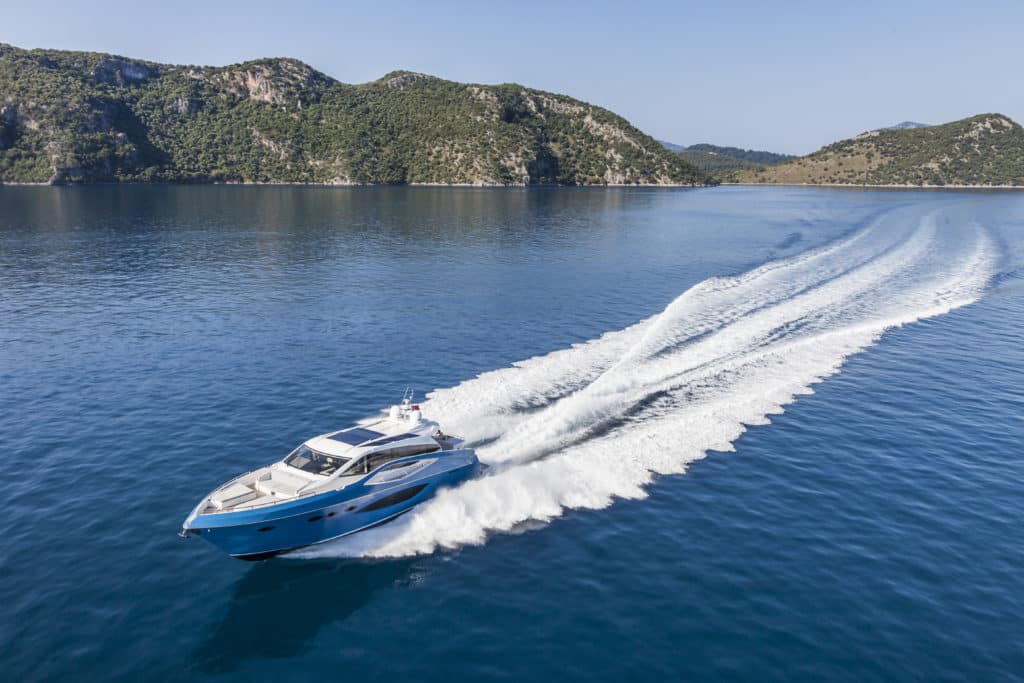
The salon offers a couple of layout options. One puts the galley forward opposite the helm, which means the most convenient dining area is in the cockpit. Another setup is galley-down, with the salon space occupied by a dining area. This is perhaps more practical, but it means you lose a guest cabin below. A door on the starboard side behind the helm provides access to the side deck, with the whole aft salon area given over to the lounge with its low table and rising TV in the cabinet on the port side. The distinctive rising bulwark line of the exterior styling obstructs some of the view from the inside, but the large windows provide plenty of natural light, which is enhanced by small angled windows in the ceiling and a large opening sunroof. Belowdecks is an inviting master suite to port and a combined desk and vanity to starboard. The large hull windows offer a great view from the bed and bring lots of light into this stateroom. A walk-in closet occupies the starboard aft corner, and on the opposite side is the bathroom. Forward of the master are two guest cabins with double bunks to port and a twin to starboard. (The double-bunk cabin disappears when you choose the galley-down.) -Forward is a comfortable VIP cabin with natural lighting via overhead hatches as well as side portholes. The decor throughout the -interior is modern, using neutral colors that create a warm, inviting ambience. An intriguing dark-olive-tinted wood brings a sophisticated richness to the interior. Whether the galley is up or down, it -features a range of -equipment including dishwasher, four-burner cooktop and oven, and fridge-freezer. Additional freezers can be installed. A washing machine is under the stairway.
With the introduction of this 70, Numarine has brought new thinking to its motoryacht design. Moving away from the conventional can be a challenge for us all, and I found that the 70’s styling grew on me. By the end of the sea trial, I was embracing this yacht’s concept with open arms. My attitude was no doubt helped by her precise and exciting handling, and her options. You can even have yours in orange.
The View Aft
We all want to entertain outside at sea, and this cockpit has room for all with a settee on three sides and a barbecue counter in the port corner. A sun bed is over the transom, and portable sun protection for the cockpit includes a roll-out blind that emerges from the rear of the fixed section above, great for alfresco lunches. From the cockpit’s port side, you can walk up to the bow and its settee and sun beds. BUT WAIT, THERE’S MORE. Looking to cool off in the hot sun? Just abaft this space, a swim platform can be raised or lowered at the push of a button, also enabling easy tender stowage for your RIB or PWC. Her transom door allows passage to this yacht’s two-berth crew cabin too.
